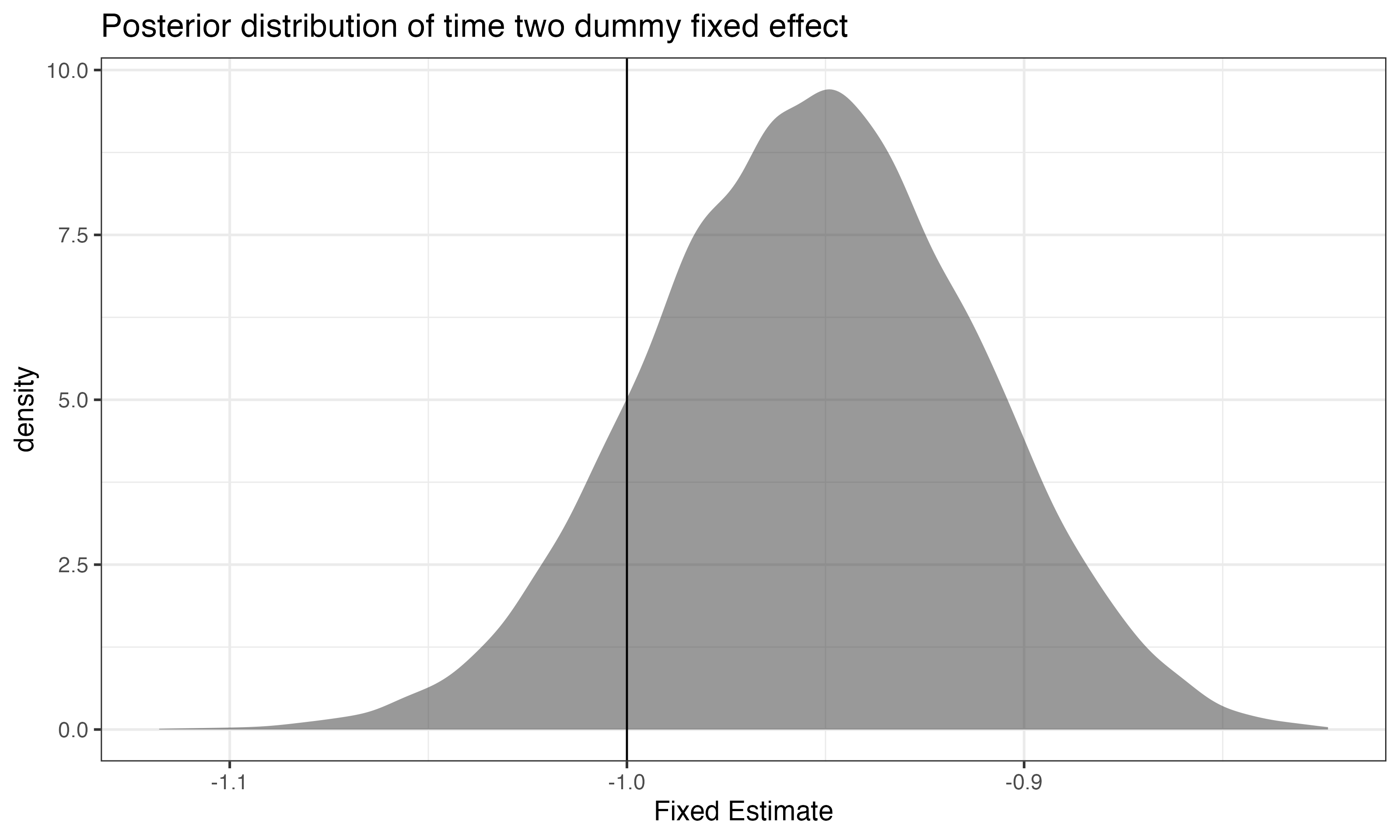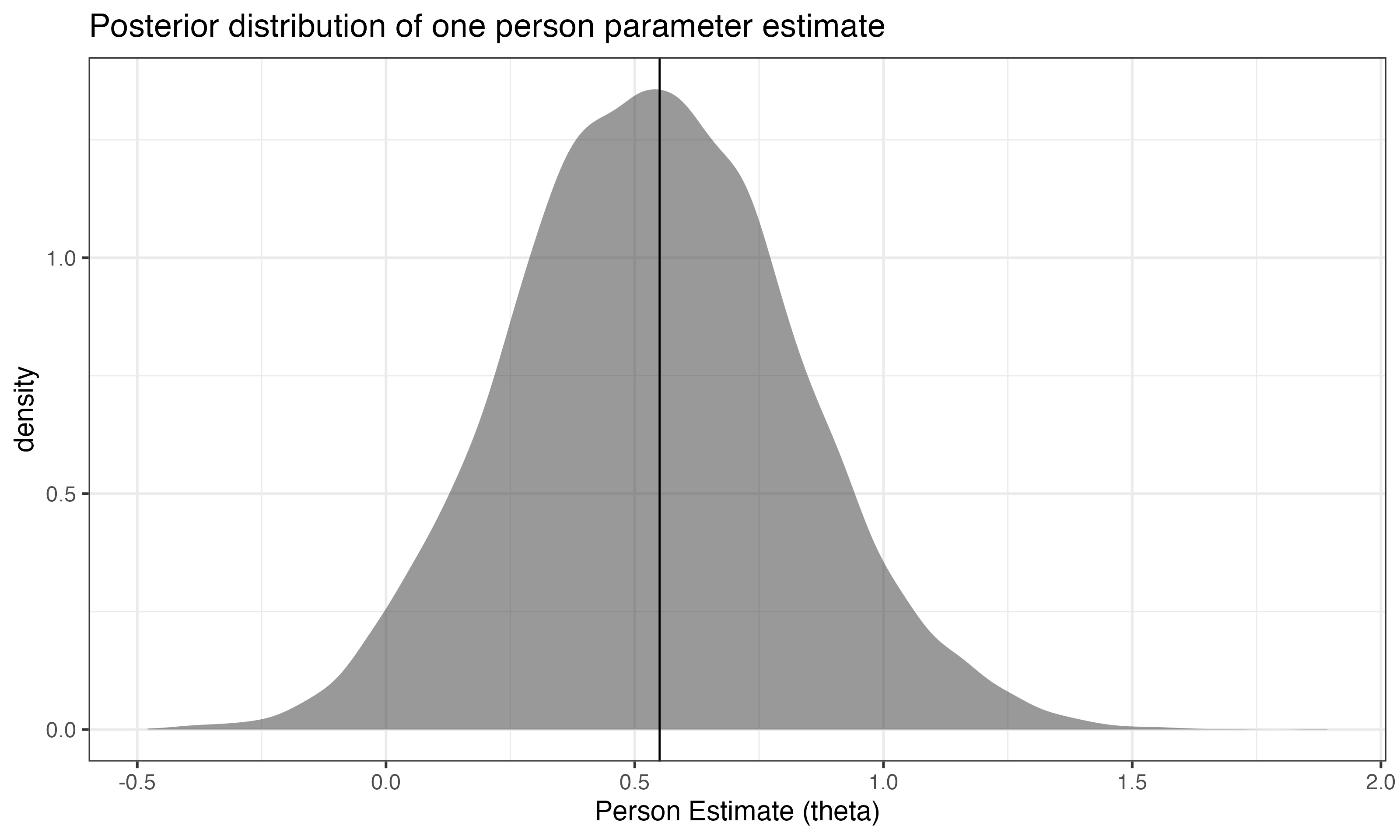Linking with the Bayesian Item Response Theory Model
Brandon LeBeau & Xiaoting Zhong
University of Iowa
Research Problem
- IRT models specified as linear mixed models are not new (e.g., Adams, Wilson, & Wu, 1997; Kamata, 2001; Mellenbergh, 1994; Rijmen et al., 2003).
- Some have discussed evaluating DIF in these frameworks too (e.g., Noorgate and De Boeck, 2005).
- To our knowledge, these methods have not been explored to which the extent they properly link scores.
Heterotypic Continuity
- We approach this research primarily from a psychological measurement lens, where heterotypic continuity is often of concern.
- Heterotypic Continuity occurs when the same psychological reasons underlie different behaviors at different ages—the same construct looks different across development (Petersen, Choe & LeBeau, 2020).
- Examples: Externalizing Problems (Petersen & LeBeau, 2020; Petersen & LeBeau, 2021)
Limitations of current linking
- Item parameter estimates treated as known parameters for linking.
- Problematic in small samples
- Does not account for any clustering in the data collection design
- Current software for linking is cumbersome to use.
- Limits use for applied researchers
Bayesian Generalized Linear Mixed Model
Focusing on dichotomous items, we could define a 2pl IRT model within a linear mixed model:
$$ P(y = 1) = logistic(\alpha{i}(b{p} + \gamma_{i})) $$
- $\alpha_{i}$ is item specific discrimination
- $b_{p}$ is a random person effect, often called theta or ability
- $\gamma_{i}$ is an item easiness term
Adding Attributes
Attributes can be added as item, person, or both item and person attributes.
Example:
$$ P(y = 1) = logistic(\alpha{i}(b{p} + \gamma{i} + X{jpi} \beta_{j})) $$
- $X_{jpi}$ is a design matrix.
- $\beta_{j}$ are a set of $J$ regression coefficients.
Specific Example - 3 time points
Example
$$ P(y = 1) = logistic(\alpha{i}(b{p} + \gamma{i} + \beta{1} time{2} + \beta{2} time_{3})) $$
- $time_{2}$ is a dummy attribute, 1 = time 2, 0 = otherwise
- $time_{3}$ is a dummy attribute, 1 = time 3, 0 = otherwise
Simulation Conditions
- Sample size fixed at 1000
- 3 time points
- Number of items fixed at 20 for each time point
- 10 common items (40 total items, 10 in common, 10 unique across 3 time points)
- Change in common easiness: -0.5, 0, 0.5
Data Generation
- Data were generated by randomly generating 1000 person parameters (ability/theta)
- Item parameter were randomly generated for all unique items (30 items)
- Common item parameters at each time point were shifted based on the change in common easiness.
Fixed Effect Results - Time 2

Fixed Effect Results - Time 3

Recovering Ability

Concluding Remarks
- Fitting IRT models as mixed models is highly flexible.
- Preliminary evidence suggests adequate recovery of parameters.
- May work in small samples due to ability to impose prior information
Future Work
- Vary more data conditions to evaluate ability to link across different situations
- Non-linear change across time
- More time points
- Smaller sample size
- Evaluate more complex model to allow variance of person parameters to change over time
Get in Touch
- webpage: https://brandonlebeau.org/
- twitter: @blebeau11
- GitHub: lebebr01
- LinkedIn: blebeau11
- slides: https://brandonlebeau.org/slides/ncme-2023
Linking with the Bayesian Item Response Theory Model
Brandon LeBeau & Xiaoting Zhong
University of Iowa